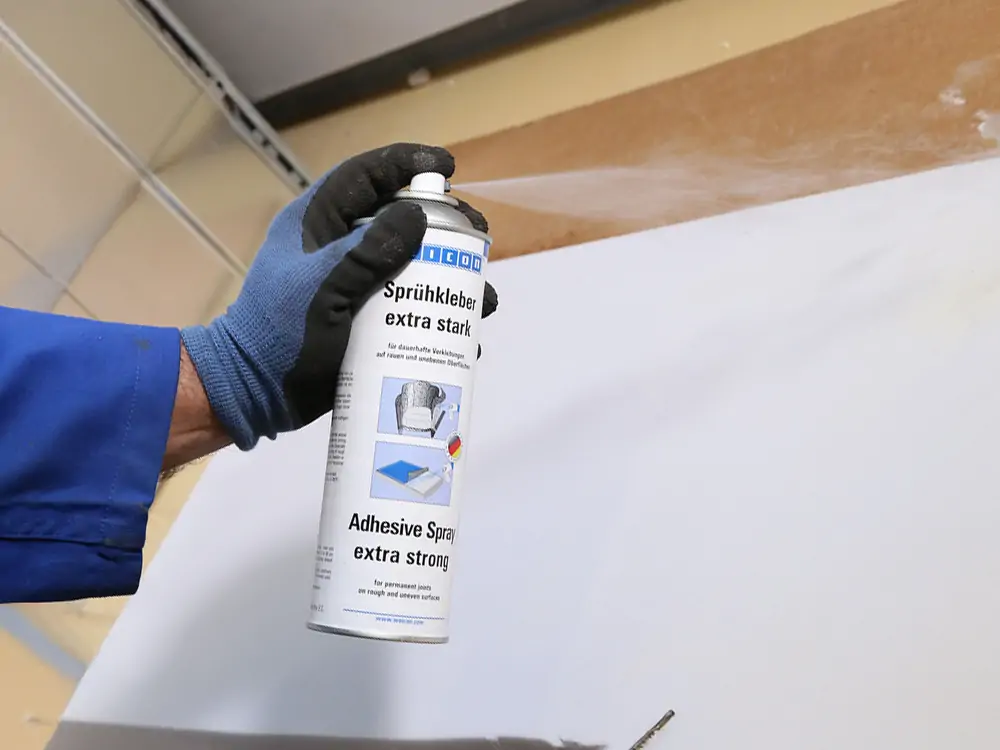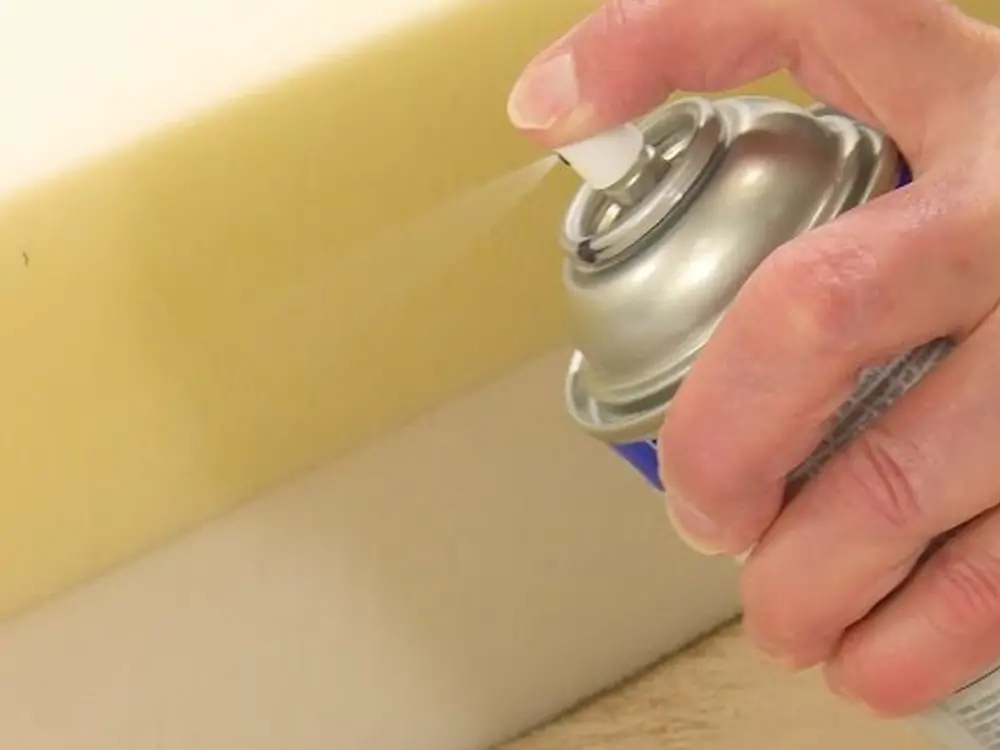Regarding creative projects, spray adhesives are preferable because they offer even coverage, quick drying time, repositionability, and compatibility with various materials. It is no surprise that spray adhesives are a staple for school projects.
When choosing a spray adhesive for a school project, consider the materials used for the project. Choose a non-toxic spray adhesive that offers a strong bonding and dries fast. In most cases, you will need to use a repositionable adhesive, but you may also want to use a permanent one.
This article will help you select the best spray adhesive for a school project. Here, you will find answers to some of your nagging questions regarding the selection of spray adhesives.

Factors to consider when choosing the right spray addresses for a school project
There is not one single perfect spray adhesive. It all depends on the material you are working with. Here are some things that need to be taken into consideration when choosing spray adhesives for school projects:
Material type
Your choice should primarily depend on this factor. For example, if you choose a strong adhesive for foam, which is a delicate material, the adhesive can end up ruining the project. Similarly, you need to achieve an even application for a paper project. And if you are working with wood and metal, you need a high-tack adhesive.
Purpose of the project
Your choice of spray adhesives should also depend on the purpose of your project. If it is an adjustable display or prototype, you need temporary bonds. When you adjust or remove its parts, you must avoid damaging the prototype. In such a case, you should go for a repositionable spray adhesive. On the other hand, if you are building an architectural model, you need permanent bonds, so you have to look for a strong adhesive.
Safety
When it comes to school projects, safety is an important concern. To minimize health risks, always choose a low-VOC, non-toxic spray adhesive. Choose spray adhesives that are rated safe for school projects.
Environmental conditions
Humidity, temperature, and other environmental conditions can determine the efficacy of a spray adhesive to some extent, so they should be taken into consideration. For example, the drying time may be slightly longer if the day is humid. The humidity level can even affect the bond strength.
With that said, for school projects, the most important factors to be considered are material type and safety. Just go for a good brand and choose a product that is specifically designed for the materials you are working with.

Why choose spray adhesives for school projects?
Spray adhesives are preferred for school projects because they are straightforward to use, dry quickly, and come in many different compositions. These adhesives are compatible with the materials usually used for school projects. Let’s explore the reasons a bit:
- Even coverage: Spray adhesives offer consistent application, improved aesthetics, and reduced mess. You can easily disperse a fine mist and thus avoid the risks of bare patches and glue clumps. There are no risks for drips or spills. This makes it easy to keep the workspace clean. As a result, the project can achieve a smooth look.
- Quick drying: Spray adhesives dry quickly and thus reduce the time needed to complete a project. They are great for school projects with tight deadlines. You do not have to wait long to assemble the components. Being able to complete the project within a short period, students can focus on other important things.
- Repositionability: Some spray adhesives offer repositionability before the bond is permanent. You can easily peel off and readjust misaligned pieces. This gives you room for making errors. If the design is intricate and requires precise placement, you can fine-tune it as needed.
- Compatibility with a wide range of materials: Spray adhesives work well with many different materials, including foam, cardboard, paper, plastic, wood, fabric, and metal. So, these adhesives come in handy for many types of school projects. Whether it is a simple craft or a complex model, you can rely on spray adhesives.
To get the best out of spray adhesives, you have to use them in the right way. And even if you are using a low VOC spray adhesive, you must use it in a well-ventilated area.
What materials are commonly used for school projects?
School projects use a range of materials to encourage learning. Here are some of the most commonly used materials for school projects:
Foam:
Lightweight and versatile, foam is used in many school projects that involve craft displays, model building, and experiments. If you want to use spray adhesive with foam, choose one that offers gentle bonding–to avoid distorting the material.
Fabric:
Fabric is used to add texture to installations, displays, and costumes. A spray adhesive that is used with fabric must offer repositioning.
Cardboard and paper:
Cardboard and paper are used for models, scrapbooks, and posters. Such projects require an even application of adhesives. With spray adhesives, you can easily keep these materials smooth and flat.
Wood:
Building models and structures often require craft sticks, wooden panels, and balsa wood. Adhesives that are used with these materials must offer strong bonds as well as clean application.
Acrylic and plastic sheets:
Designs that include transparent elements use acrylic sheets. If you are working with these materials, you have to use an adhesive that is designed for non-porous surfaces.
Natural elements:
For art and science projects, students often have to use small pebbles, leaves, or dried flowers. When working with these materials, spray adhesives are ideal.
It is important to note that there are specifically formulated spray adhesives for different types of materials. It is recommended that students choose adhesives that are compatible with the materials they are working with, and avoid relying on general-purpose spray adhesives.

Foam: the most commonly used material in school projects
Thanks to its versatility, adaptability, and ease of use, foam is a staple material for school projects. The following types of foams are mostly used in school projects:
- Polystyrene foam: Polystyrene foam is preferred for creating crafts and models, in part because this foam is lightweight. Thanks to its low density, it is perfect for projects with detailed structures and intricate designs.
- Acoustic foam: Acoustic foam is good for studying sound properties or creating quieter environments. This type of foam may be used in some school projects. When working with acoustic foam, choose a spray adhesive that is specifically formulated for this material.
- Polyurethane Foam: Polyurethane foam offers flexibility and durability, and it is often used for padding projects and soft sculptures.
When working with foam, it is important to choose the right spray adhesive. Depending on the type of project you are working on, you may want Sprayidea 93 or another spray adhesive that is specifically formulated for foam.
Using spray adhesives for different materials
While spray adhesives are compatible with a wide range of materials, the success of a school project largely depends on the way you apply the adhesive. Remember the following application tips when working with different materials:
- Foam
Foam materials can melt or degrade if you use non-solvent adhesives, so avoid them. Before you apply the adhesive, thoroughly shake the can. Apply in thin and even layers to prevent oversaturation. Follow the recommendations from the manufacturer. - Paper and cardboard
When applying spray adhesive on paper and cardboard, consistently maintain a distance of 6-8 inches from the surface. This distance will ensure even coverage. To avoid wrinkles and saturation, apply light and even coats. Also, before you handle the project, allow it to dry completely. - Fabric
Before you apply spray adhesive on fabric, run a small test to see if it will cause damage or staining. Apply it on an inconspicuous, small area and see what happens. Most fabric projects require temporary adhesives. Sprayidea DY-100 is a well-known spray adhesive for fabric. - Wood
Wood surfaces bond well if they have smooth surfaces. To ensure that, consider sanding the surfaces. If the wood pieces are heavier, you may want to apply multiple thin layers of spray adhesive to create a stronger bond. - Plastic and acrylic sheets
If your project involves the use of plastic and acrylic sheets, choose a spray adhesive that is compatible with non-porous surfaces. It is also important to use a colorless adhesive because you want to maintain the transparency and clarity of the materials. Avoid applying too much adhesive because it can make the material look uneven or cloudy.
Conclusion
While spray adhesives are preferable to contact adhesives for school projects, the success of your project depends on the compatibility of the spray adhesive with the materials used for the project. Also, it is crucial to apply the adhesive correctly.
The key is to avoid relying on a general-purpose adhesive for your project. Look for a product that is specifically designed for the materials you are using. It all comes down to understanding your specific needs.
